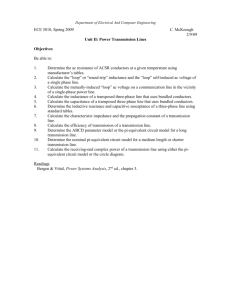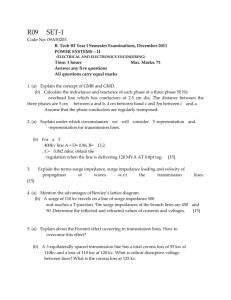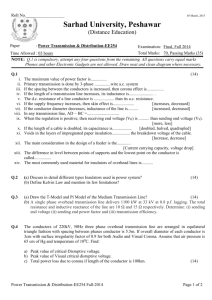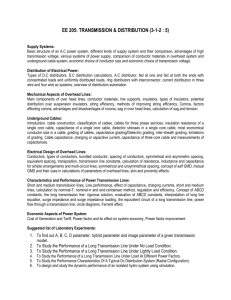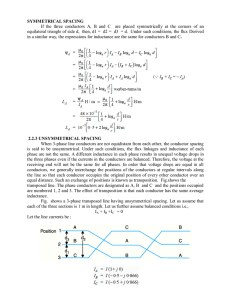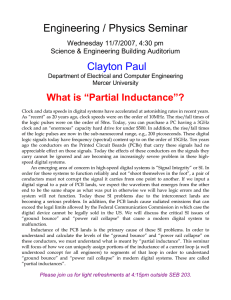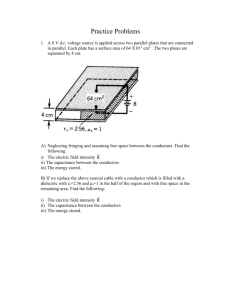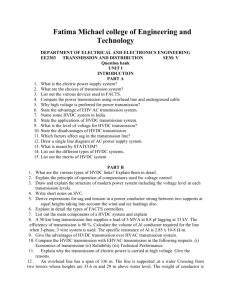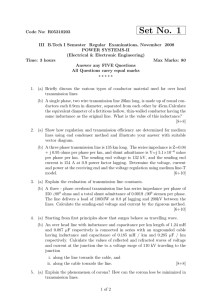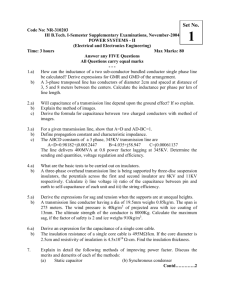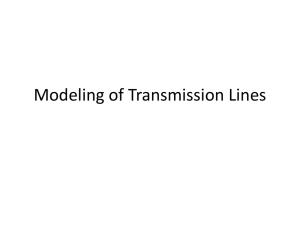BTE3 : POWER SYSTEMS 1. LOAD CHARACTERISTICS
advertisement
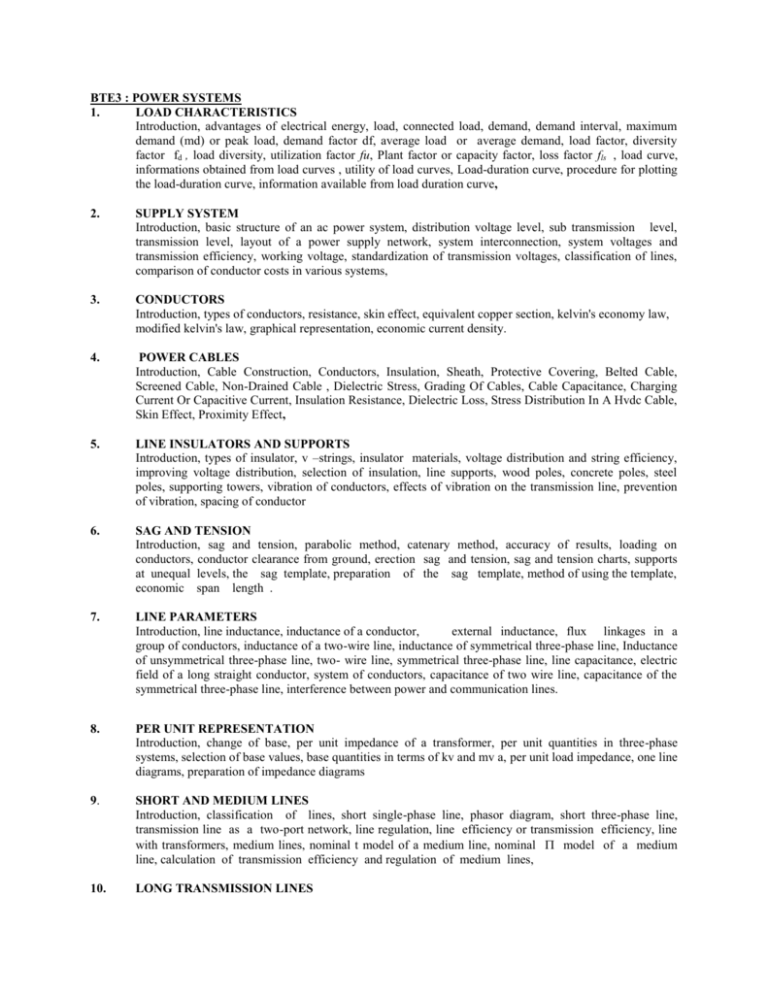
BTE3 : POWER SYSTEMS 1. LOAD CHARACTERISTICS Introduction, advantages of electrical energy, load, connected load, demand, demand interval, maximum demand (md) or peak load, demand factor df, average load or average demand, load factor, diversity factor fd , load diversity, utilization factor fu, Plant factor or capacity factor, loss factor fls , load curve, informations obtained from load curves , utility of load curves, Load-duration curve, procedure for plotting the load-duration curve, information available from load duration curve, 2. SUPPLY SYSTEM Introduction, basic structure of an ac power system, distribution voltage level, sub transmission level, transmission level, layout of a power supply network, system interconnection, system voltages and transmission efficiency, working voltage, standardization of transmission voltages, classification of lines, comparison of conductor costs in various systems, 3. CONDUCTORS Introduction, types of conductors, resistance, skin effect, equivalent copper section, kelvin's economy law, modified kelvin's law, graphical representation, economic current density. 4. POWER CABLES Introduction, Cable Construction, Conductors, Insulation, Sheath, Protective Covering, Belted Cable, Screened Cable, Non-Drained Cable , Dielectric Stress, Grading Of Cables, Cable Capacitance, Charging Current Or Capacitive Current, Insulation Resistance, Dielectric Loss, Stress Distribution In A Hvdc Cable, Skin Effect, Proximity Effect, 5. LINE INSULATORS AND SUPPORTS Introduction, types of insulator, v –strings, insulator materials, voltage distribution and string efficiency, improving voltage distribution, selection of insulation, line supports, wood poles, concrete poles, steel poles, supporting towers, vibration of conductors, effects of vibration on the transmission line, prevention of vibration, spacing of conductor 6. SAG AND TENSION Introduction, sag and tension, parabolic method, catenary method, accuracy of results, loading on conductors, conductor clearance from ground, erection sag and tension, sag and tension charts, supports at unequal levels, the sag template, preparation of the sag template, method of using the template, economic span length . 7. LINE PARAMETERS Introduction, line inductance, inductance of a conductor, external inductance, flux linkages in a group of conductors, inductance of a two-wire line, inductance of symmetrical three-phase line, Inductance of unsymmetrical three-phase line, two- wire line, symmetrical three-phase line, line capacitance, electric field of a long straight conductor, system of conductors, capacitance of two wire line, capacitance of the symmetrical three-phase line, interference between power and communication lines. 8. PER UNIT REPRESENTATION Introduction, change of base, per unit impedance of a transformer, per unit quantities in three-phase systems, selection of base values, base quantities in terms of kv and mv a, per unit load impedance, one line diagrams, preparation of impedance diagrams 9. SHORT AND MEDIUM LINES Introduction, classification of lines, short single-phase line, phasor diagram, short three-phase line, transmission line as a two-port network, line regulation, line efficiency or transmission efficiency, line with transformers, medium lines, nominal t model of a medium line, nominal model of a medium line, calculation of transmission efficiency and regulation of medium lines, 10. LONG TRANSMISSION LINES Introduction, exact solution of a long line, physical interpretation of the long line equations, propagation constant, wavelength and velocity of propagation, characteristic impedance z0, hyperbolic form of line equations, evaluation of abcd parameters, ferranti effect, surge impedance loading (sil), 11. CORONA Introduction, the phenomenon of corona, theory of corona formation, the calculation of potential gradient, factors affecting corona, disruptive critical voltage, visual critical voltage, corona power loss, radio and television interference (ri), minimizing corona, bundled conductors
